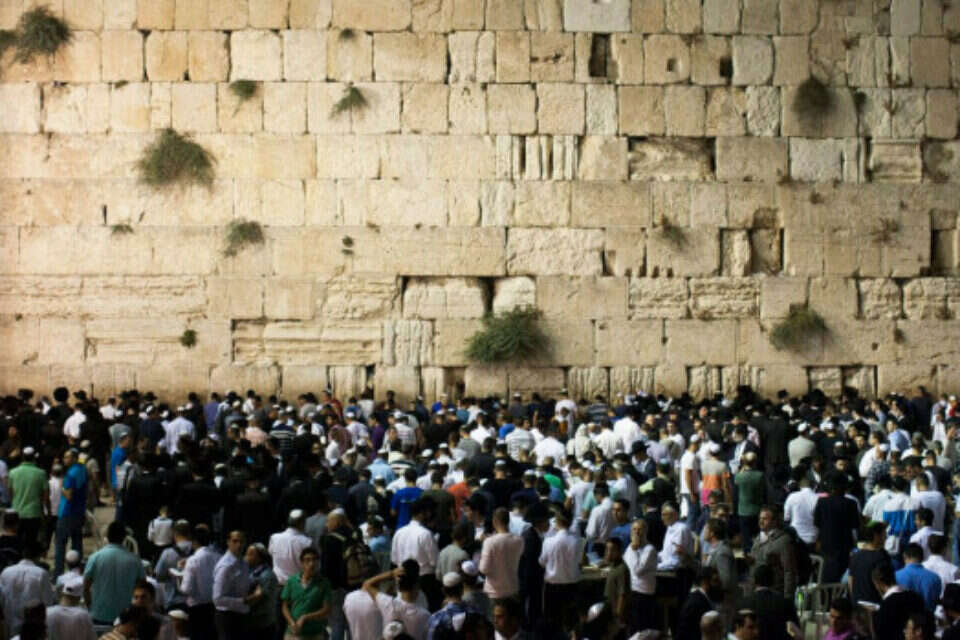Have you heard of Jerusalem Syndrome yet? There is an ethnic and religious division into this syndrome, most of which occurs among non-Jewish pilgrims and tourists who experience messianic enlightenment while walking the streets of the city. This is expressed in the feeling that they are experiencing the syndrome and are convinced that they have divine and messianic powers and/or that they are the embodiment of a character from the Bible.
Tower of David in Jerusalem (archive), photo: Getty Images
In 1969, a Christian from Australia felt this kind of spiritual enlightenment – and set fire to the Al-Aqsa Mosque, claiming that he had done so in order to bring the coming of the Messiah closer to Jerusalem. This caused controversy throughout the Muslim world, and the court ruled on his hospitalization.
In addition, there are those who, following the enlightenment, shed their clothes and walk through the streets of the city and holy places, naked as the day they were born. Others find free rein for their feelings about the city by reaching for their lives.
Studies show that for the most part, people suffering from the syndrome are people who suffered from a psychotic mental disorder even before their arrival in Jerusalem, and that their arrival there significantly worsened their condition.
Pilgrims Marching in Jerusalem (Archive),
Throughout history, there are many accounts of clerics who experienced these events, but the first clinical descriptions of the phenomenon were first documented in a scientific treatise published in 1937 by Dr. Heinz Hermann, director of the first Jewish psychiatric hospital in Jerusalem, "Ezrat Nashim".
An in-depth study conducted on the subject in recent years and published in the British medical journal The British Journal of Psychiatry characterized those affected by this syndrome as having experienced psychotic episodes in the past, and most of whom are young people who come from a Western country other than Israel, live alone and visited the city alone.
The excitement still reverberates
According to stories, Rabbi Meir Yehuda Getz, who served as rabbi of the Western Wall for many years, would meet from time to time with those suffering from the syndrome, and in a respectful and pleasant way would try to point them out for their mistake. If he met with a figure describing himself as Elijah the prophet, he would greet him, seat him after honor, and present him with difficulties that appear in the Babylonian Talmud as unexempt, until Elijah the prophet comes and excuses them. After he stuttered and had difficulty understanding the question and, of course, providing appropriate solutions, the rabbi would calmly explain to him that he was probably experiencing behavioral difficulties and it would be good for him to take care of himself, and thus the patients would internalize the need for assistance and turn to mental health treatment.
Our sages say that holiness never moved from Jerusalem even when we were exiled from our land. Unlike those suffering from Jerusalem Syndrome, who experience mental and social loneliness, our love for Jerusalem, which was destroyed and desolate for generations, stems from its historical connection and uniqueness as a connector and uniter between all parts of the nation.
A beacon to the world. Jerusalem (Archive),
"A city joined together, where tribes immigrated," says the famous phrase. A city that knew how to connect all parts of the nation and all its tribes, out of yearning and joint prayer for the peace of the entire world, a city that connects materially and spiritually.
On June 7, 1967, the reserve brigade of paratroopers broke through the Lions' Gate in the Old City, liberating the Temple Mount and the Western Wall. The force, under the command of Brigade Commander Col. Motta Gur, was joined by the Chief Military Rabbi, Major General Shlomo Goren. At the end of the battle, Colonel Gur declared: "The Temple Mount is in our hands. I'm coming back, the Temple Mount is in our hands," and moved the tired soldiers, some of whom burst into tears. The great excitement that enveloped the nation after its call resonates in our ears to this day.
Wrong? We'll fix it! If you find a mistake in the article, please share with us

